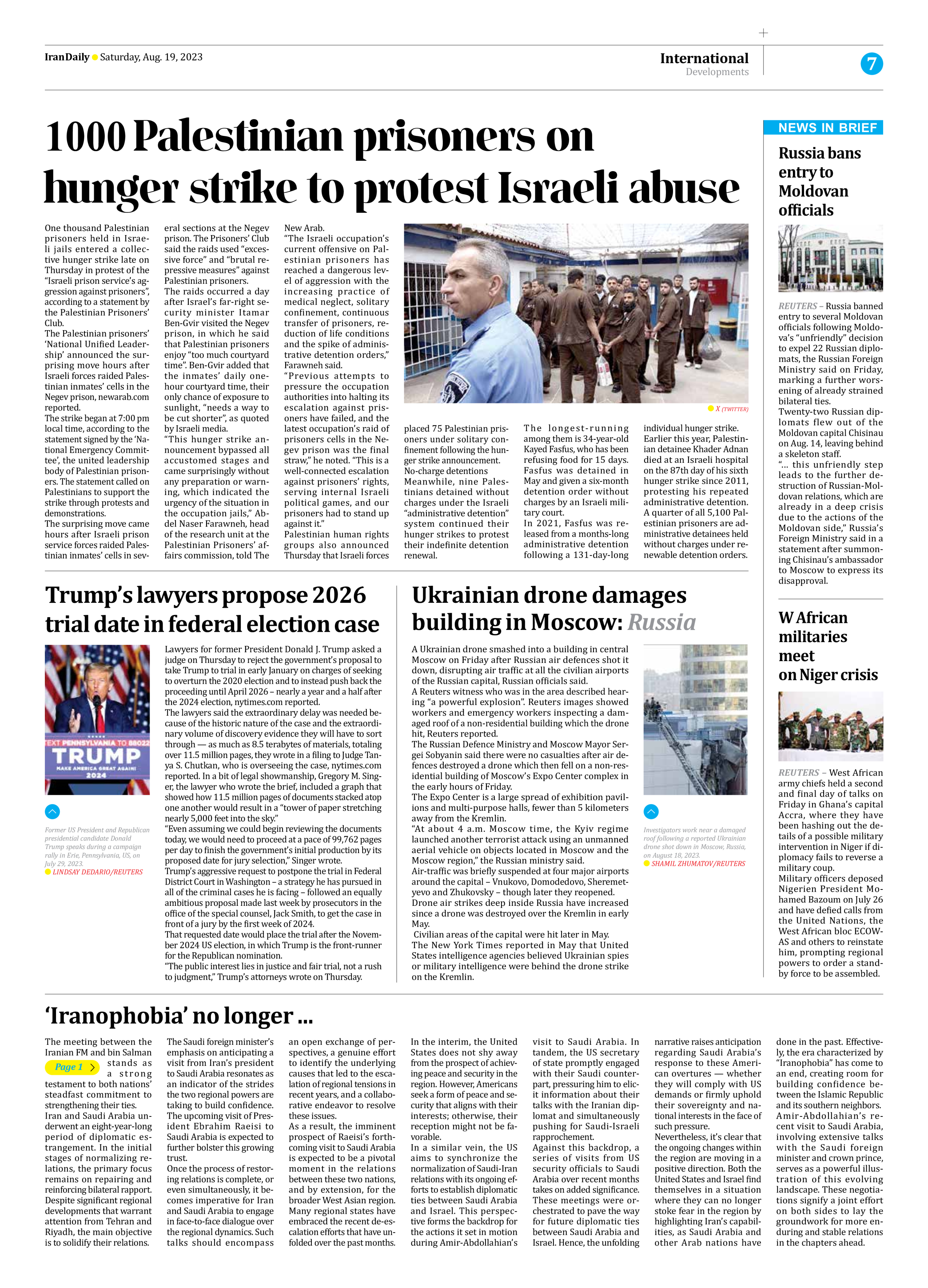
‘Iranophobia’ no longer ...
Page 1
The meeting between the Iranian FM and bin Salman stands as a strong testament to both nations’ steadfast commitment to strengthening their ties.
Iran and Saudi Arabia underwent an eight-year-long period of diplomatic estrangement. In the initial stages of normalizing relations, the primary focus remains on repairing and reinforcing bilateral rapport. Despite significant regional developments that warrant attention from Tehran and Riyadh, the main objective is to solidify their relations.
The Saudi foreign minister’s emphasis on anticipating a visit from Iran’s president to Saudi Arabia resonates as an indicator of the strides the two regional powers are taking to build confidence. The upcoming visit of President Ebrahim Raeisi to Saudi Arabia is expected to further bolster this growing trust.
Once the process of restoring relations is complete, or even simultaneously, it becomes imperative for Iran and Saudi Arabia to engage in face-to-face dialogue over the regional dynamics. Such talks should encompass an open exchange of perspectives, a genuine effort to identify the underlying causes that led to the escalation of regional tensions in recent years, and a collaborative endeavor to resolve these issues.
As a result, the imminent prospect of Raeisi’s forthcoming visit to Saudi Arabia is expected to be a pivotal moment in the relations between these two nations, and by extension, for the broader West Asian region. Many regional states have embraced the recent de-escalation efforts that have unfolded over the past months.
In the interim, the United States does not shy away from the prospect of achieving peace and security in the region. However, Americans seek a form of peace and security that aligns with their interests; otherwise, their reception might not be favorable.
In a similar vein, the US aims to synchronize the normalization of Saudi-Iran relations with its ongoing efforts to establish diplomatic ties between Saudi Arabia and Israel. This perspective forms the backdrop for the actions it set in motion during Amir-Abdollahian’s visit to Saudi Arabia. In tandem, the US secretary of state promptly engaged with their Saudi counterpart, pressuring him to elicit information about their talks with the Iranian diplomat and simultaneously pushing for Saudi-Israeli rapprochement.
Against this backdrop, a series of visits from US security officials to Saudi Arabia over recent months takes on added significance. These meetings were orchestrated to pave the way for future diplomatic ties between Saudi Arabia and Israel. Hence, the unfolding narrative raises anticipation regarding Saudi Arabia’s response to these American overtures — whether they will comply with US demands or firmly uphold their sovereignty and national interests in the face of such pressure.
Nevertheless, it’s clear that the ongoing changes within the region are moving in a positive direction. Both the United States and Israel find themselves in a situation where they can no longer stoke fear in the region by highlighting Iran’s capabilities, as Saudi Arabia and other Arab nations have done in the past. Effectively, the era characterized by “Iranophobia” has come to an end, creating room for building confidence between the Islamic Republic and its southern neighbors.
Amir-Abdollahian’s recent visit to Saudi Arabia, involving extensive talks with the Saudi foreign minister and crown prince, serves as a powerful illustration of this evolving landscape. These negotiations signify a joint effort on both sides to lay the groundwork for more enduring and stable relations in the chapters ahead.







